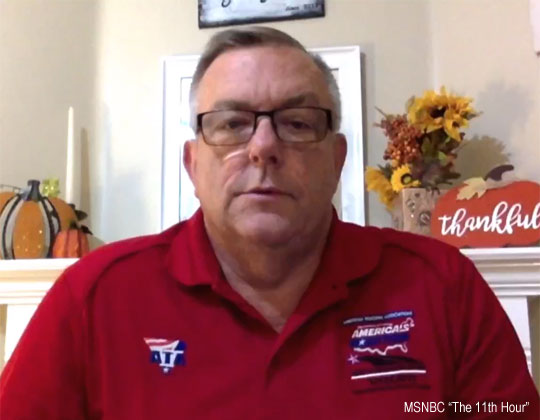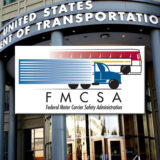Driver shortage? Big media strikes out again
A month or so ago, it was Fox Business. Now both CNBC and MSNBC covered the driver shortage and missed the story.
That’s largely because reporters and producers simply aren’t aware of the 90% driver turnover in the truckload sector or do not understand what it means to the very idea of a driver shortage. Drivers who enter trucking and leave within a year or so remain licensed, qualified drivers. So where do all those drivers go?
That’s the question co-host Tyler Mathison should have asked Chris Spear when the American Trucking Associations president appeared on “Power Lunch,” a show on CNBC, the business news channel. Spear was there to talk about the driver shortage here and in the United Kingdom. The U.K. shortage is due to Brexit, Spear pointed out.
“Our problem is a lot more vast. It has a lot of factors contributing to it,” he said.
Actually, there are just two serious factors. One is the challenging, highly responsible job itself. The other is abysmal pay. To his credit, Mathison picked up on one of them.
“The wage levels are not that high for such a demanding job,” he said.
So, somebody at CNBC had done at least a little research.
Indeed, the pay is appalling. But as always seems to happen with national media, they didn’t notice the elephant in the room. Or maybe they missed the forest for the trees. Pick your cliche. They seemed unaware of the 90% turnover rate, and Chris Spear sure wasn’t going to tell them about it.
Once again national media failed to notice what should be obvious – a 90% turnover rate means trucking pumps through a huge number of drivers every year, literally hundreds of thousands. And when they bring in that many drivers, almost as many drivers leave. Where do they go? Are they not still CDL drivers? Did they hand in their licenses and experience on their way out?
The U.K. locked out its source of low-wage drivers from Eastern Europe when it left the European Union and closed its borders. In the U.S., the source of low-pay drivers is an enormous driver recruiting industry. It’s like a giant vacuum cleaner sucking up hundreds of thousands of drivers and driver wannabes every year. The fact that it barely keeps up with the number of drivers who leave every year is what the ATA calls a shortage. The only shortage is of drivers willing to do the job for the pay offered, not the number of drivers available.
MSNBC did a worse job last week when Brian Williams interviewed John McKown, an LTL driver for TForce Freight who wore an ATA logo on his shirt.
TForce is the new name for what until earlier this year was UPS Freight. Of course, driver turnover in LTL is far less than in the dominant truckload sector.
Williams asked why there was a shortage.
“For one thing, COVID shut down the driving schools last year,” McKown said.
He didn’t have a chance to add anything else. Williams moved on to talk about technology and other subjects.

John McKown, an LTL driver for TForce Freight, on MSNBC’s “The 11th Hour With Brian Williams.”
So, that was the extent of driver-shortage questions even though during the entire interview a chyron at the bottom of the screen read “Driver shortage puts strain on trucking industry.” Coverage within the last few days on CNN Business and CBS was not much better.
In every instance, producers called the ATA and quoted what they were given without question. Like CNBC, CNN gave Chris Spear a forum to perpetuate the ATA’s Big Lie.
To the media, trucking is simple. They do not understand trucking is as complex as the economy itself. In its near endless forms, trucking reflects the shape, size, density, and value of whatever is being shipped as well as the hazards involved. Trucking differs in how fast a shipment must get from here to there, where here and there are, who owns the freight, who’s shipping the freight, who’s receiving the freight, the overall cost of the shipment, and more – even the weather.
You may be able to explain to a reporter or producer the difference between a private carrier and a for-hire carrier. It’s harder to explain the difference between LTL and truckload. Forget about explaining how there are lots of drivers out there when the American Trucking Associations, the state associations, and the media that rely on them for good information proclaim a critical driver shortage.
It simply isn’t so. LL









